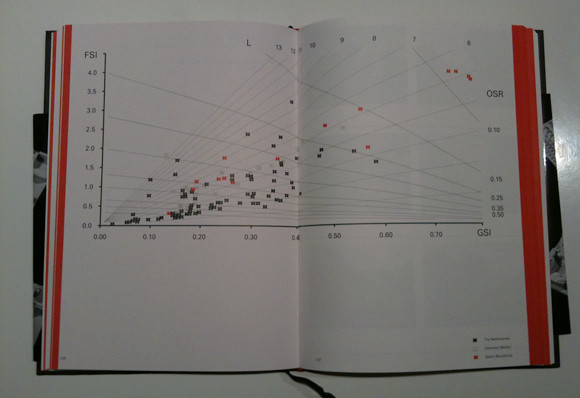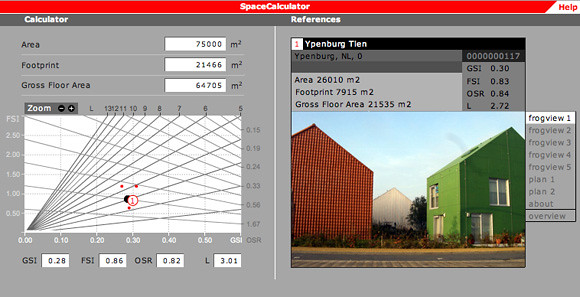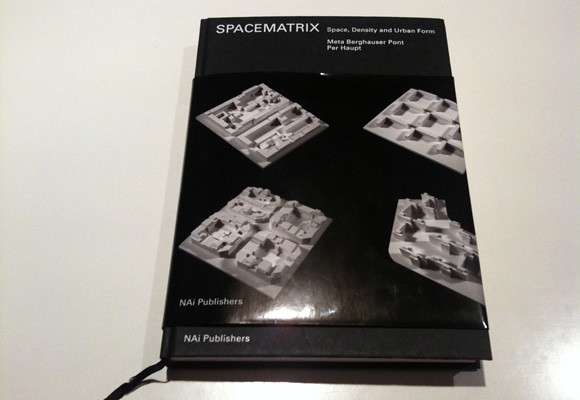A recent NAi Publishers book by Meta Berghauser Pont and Per Haupt examines afresh this topic of density and urban spaces under the title 'SPACEMATRIX - Space, Density and Urban Form'.
One thing is obvious from the beginning and this is refreshing, it is an approach to density that does not start from the visual and does put a lot of effort into developing a whole framework of characteristics of density from a simple, pragmatic mathematical point of view.
Calculating density might be the obvious thing to do, but looking back there hasn't been a lot of other publications on this topics actually looking into the math of the topic. Other than in building regulations one might not find a lot about actual density figures.

Image taken from SPACEMATRIX / Spread from the book showing the central matrix. This is the tool to relate the 79 example projects.
The core of the book definitely is the 'Spacecalculator'. This section explains the different factors and calculation methods, but then also introduces how the different numbers calculated for different projects can actually be compared in the 'Spacematrix'. In addition this section is followed by a whole catalogue of 79 built examples aken from Amsterdam, Berlin and Barcelona.
In additiona to the book this section is available online at http://www.spacecalculator.nl/. A tool that many planners and offices will love. A click on the 'Spacematrix' brings up a list of projects that are cose to this value. Each individual project is documented with images and plans. This provides a good sense of what the density factor produces and how the same factors can vary in appearance. So for your next competition were you are working on a whole block or estate, this is the reference and source for density example!

Image taken from spacecalculator / By clicking on the left hand matrix a selection of examples pop up with the related density come up. Each project is documented with additional details.
The book is otherwise structured classically organised in to concept, history, variables, urban form, performance, practice and qualities as a conclusion. However in the light of the approach via the mathematical way this provides a great background. In this sense the authors have managed to merge the technical core element of the density calculation with the rest of what we know from the density calculation. This rich background of the topic as it is discussed in the book might also be partially because the content is based on the authors PhD research work undertaken at the TU Delft. The Thesis was successfully defended in late 2009. And how fresh, surprising and new books based on PhD thesis' can be was only recently demonstrated for example by the book Grand Urban Rules by Alex Lehnerer.
The book is beutifully designed by Studio Joost Grootens as was the extremely beautiful book 'Atlas of the New Dutch Water Defence Line'. In this sense even though the topic is approach from a mathematical perspective and suporte with a lot of theoretical background information it is a joy to read. A must have for every planning office and the chance to finally move beyond abstract discussion, starting to develop an individual approach with each project.

Image taken from nijhoflee.nl / Book cover.
Pont, M.B., Haupt, P., 2010. Space Matrix: Space, Density and Urban Form, NAI Publishers.
Tidak ada komentar:
Posting Komentar